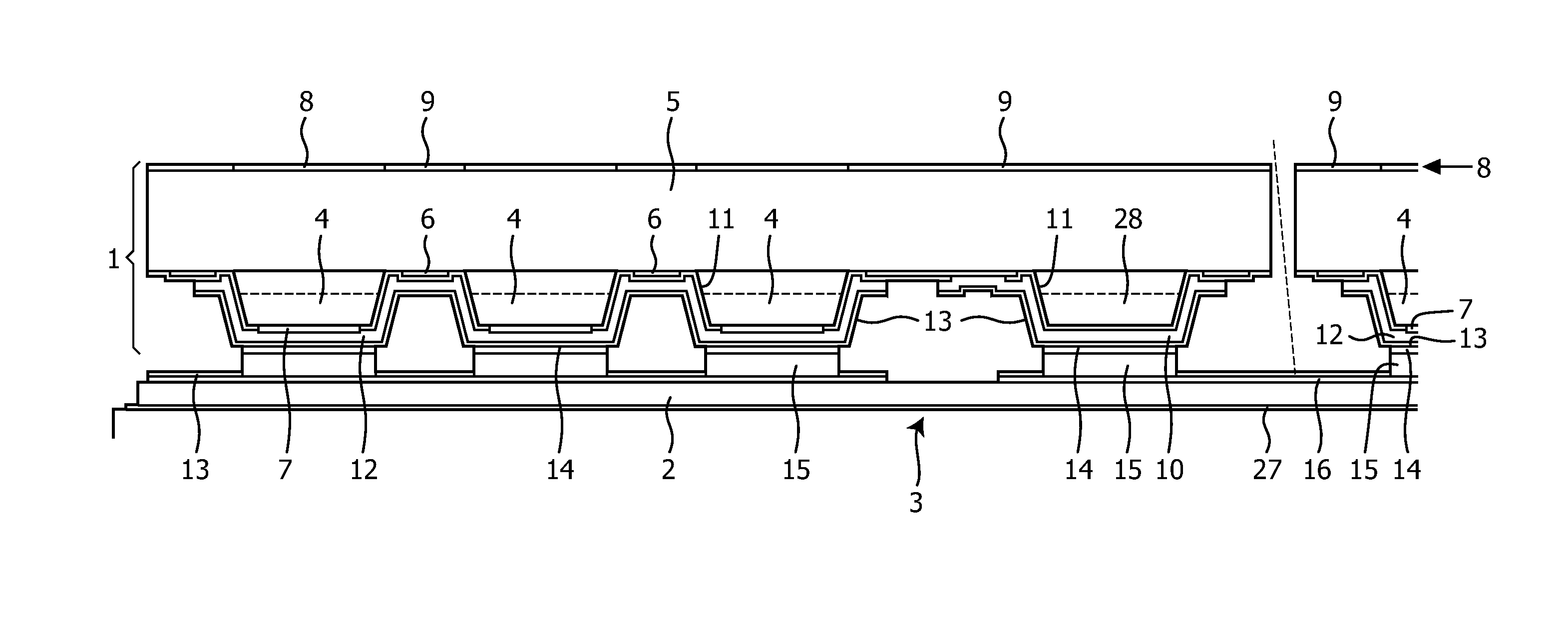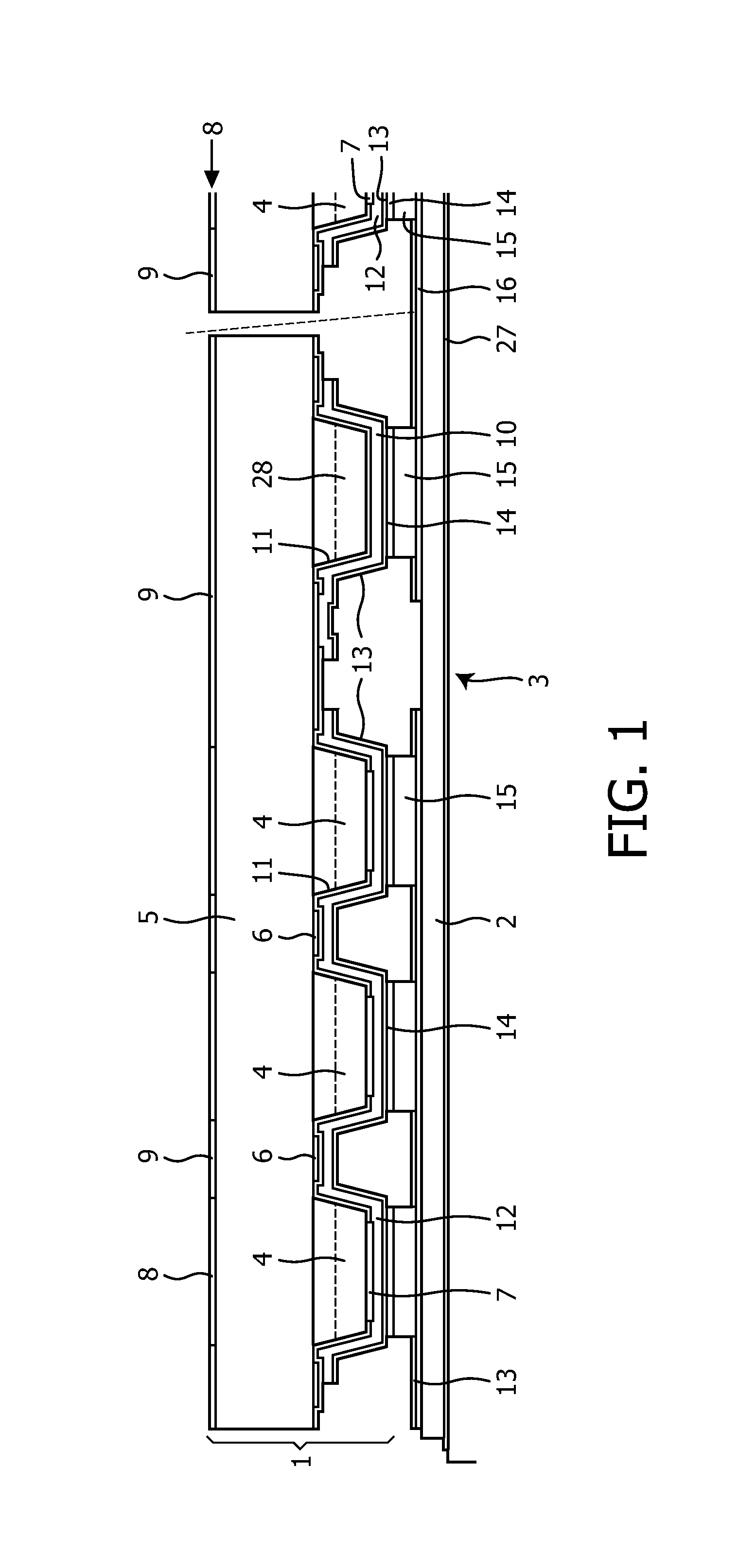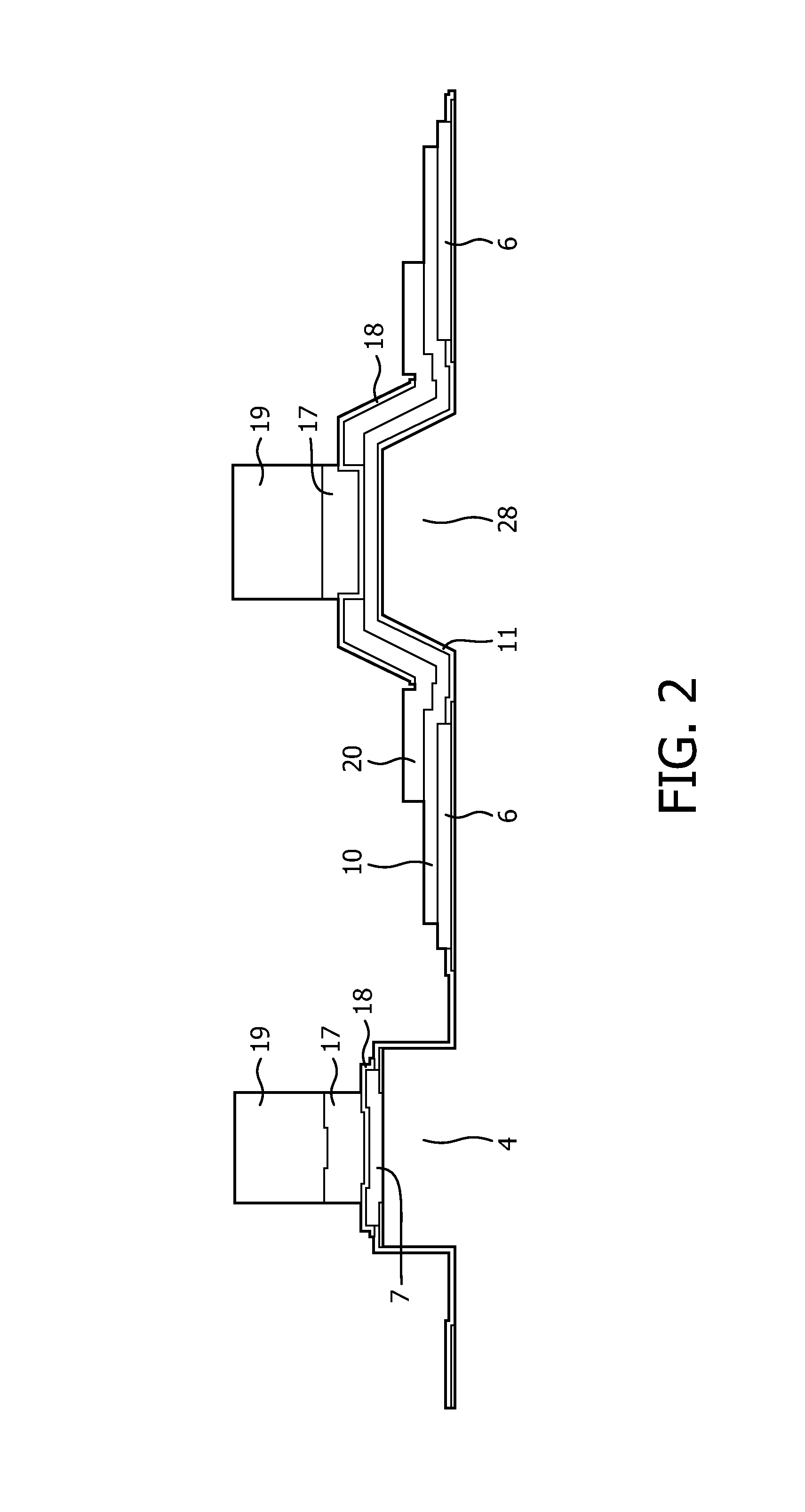Method of assembling VCSEL chips on a sub-mount
a technology of vcsel chips and sub-mounts, which is applied in the direction of lasers, semiconductor lasers, basic electric elements, etc., can solve the problems of high cost and time consumption, and achieve the effect of high chip alignment accuracy
- Summary
- Abstract
- Description
- Claims
- Application Information
AI Technical Summary
Benefits of technology
Problems solved by technology
Method used
Image
Examples
Embodiment Construction
[0019]FIG. 1 shows an arrangement by which self alignment during soldering a bottom-emitter VCSEL chip 1 to a sub-mount 2 is achieved such that the emission windows of the VCSEL's of all chips on one sub-mount 2 are arranged in a desired exact manner with respect to each other. Each chip 1 comprises a VCSEL array of several VCSEL's from which three are shown with their p-type mesas 4 in FIG. 1. The figure shows the cross-section of one complete VCSEL chip 1 and only a small portion of a second chip at the right hand side. The VCSEL chips 1 comprise a n-type substrate 5 on which the p-type mesas 4 are formed in a known manner. The VCSEL's are connected by n-contacts 6 at the substrate side and p-contacts 7 on top of the mesas 4. The n-contacts 6 are metal layers having a low Ohmic contact (low Schottky barrier) to the n-type GaAs material of the substrate 5 or to the n-type DBR mirrors in case that mesa etching has stopped in these mirror layers (not shown in the figures). On the bot...
PUM
 Login to View More
Login to View More Abstract
Description
Claims
Application Information
 Login to View More
Login to View More - R&D
- Intellectual Property
- Life Sciences
- Materials
- Tech Scout
- Unparalleled Data Quality
- Higher Quality Content
- 60% Fewer Hallucinations
Browse by: Latest US Patents, China's latest patents, Technical Efficacy Thesaurus, Application Domain, Technology Topic, Popular Technical Reports.
© 2025 PatSnap. All rights reserved.Legal|Privacy policy|Modern Slavery Act Transparency Statement|Sitemap|About US| Contact US: help@patsnap.com



